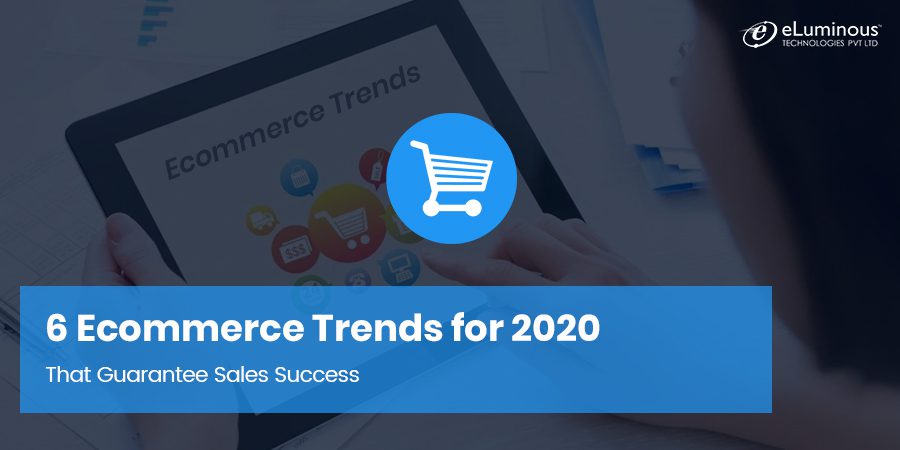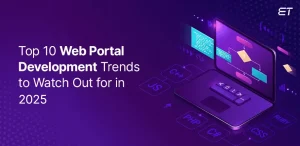Surviving and thriving in eCommerce is tough. While you can take heart from the fact that eMarketer expects worldwide eCommerce sales to cross the $4 trillion mark in 2020, you also have to contend with over 24 million eCommerce sellers vying for a share of that growing pie.
Even if you consider, say, only a fourth of those sellers are turning reasonable sales volumes and belong to thousands of different niches, the competition is cut out for you.
This brings us to the question, how do you survive and thrive in this burgeoning eCommerce market?
The answer is simple; you have to keep up with the latest eCommerce trends. In this post, we look at six eCommerce trends that hold the key to eCommerce success in 2020 and further.
Mobile Will Remain the Fulcrum
By 2021, 53.9% of US eCommerce sales will happen through a mobile device. eMarketer expects worldwide mobile commerce to be even more robust at 72.9% of total eCommerce sales by the same time.
What this means is that mobile commerce is the main area you want to focus on in 2020. Having a mobile responsive eCommerce website is the bare basic now. You need to step up your game by making your mobile eCommerce experience faster, more convenient, and more secure.
There are stats to back this up as well – mobile conversion rates are half of their desktop counterparts, Google says over 50% of buyers abandon a site if it takes more than three seconds to load fully, and mobile bounce rates are 10-20% higher than desktop ones.
The only way to surmount these hurdles is by continuously optimizing your mobile eCommerce experience. This can include investing in headless solutions like PWA (Progressive Web Application), which delivers a fast native app-like experience but through the web.
You can also dial up the convenience factor by offering multiple payment options such as PayPal, Google Wallet, Visa Checkout and Apple Pay.
The mantra is simple – hire dedicated developers to build a mobile solution for your eCommerce venture pronto and if you already have one, keep optimizing it for better user experience. A major part of your eCommerce success in 2020 depends on how well you do these two things.
Personalization Is the Key to Differentiation
As previously mentioned, eCommerce has become a highly competitive space, a trend likely to intensify in the coming years. You can differentiate yourself from this clutter by offering personalized customer experience.
Personalization involves learning from customer behavior to offer a seamless shopping experience. Examples include something as simple as finding the right items and checking out instantly to more complex ones like recommending related products based on previous purchases.
You can also create upselling and cross-selling opportunities by using several other data points such as search queries, shopping cart abandonment, geographic location, and social behavior
Customers too are shown to respond positively to a personalized buying experience. A consumer trends report by Accenture notes that 65% of customers “are more likely to buy from a retailer if they are recognized, remembered, and receive relevant recommendations”.
Do this regularly and you’re looking at an excellent CLV (Customer Lifetime Value), a lower customer acquisition cost, and healthier profit margins for years to come.
Chatbots Are the Force-Multipliers You Need
Chatbots are yet another example of how eCommerce is moving towards replicating the shopping experience of a physical store. Similar to attendants and salespersons in brick and mortar stores, chatbots enable you to communicate with your customers and make them feel valued.
More importantly, customers are open to the idea of conversing with chatbots. A study by Kinsta found that over 60% of customers preferred websites, apps, or chatbots to answer their basic questions. The reasons for this shift in preference are easy to guess – chatbots respond faster and are available 24×7.
Furthermore, massive improvements in NLP (Natural Language Processing) and ML (machine learning) have made chatbots smarter and more accurate. This can create new business opportunities as chatbots recommend products based on customer conversations and improve your after-sales support.
Headless Commerce Is Here to Stay
Unlike other customer-facing eCommerce trends in this list, headless commerce concerns the backend of your eCommerce store. Simply put, headless commerce allows you to fully decouple your eCommerce platform from its frontend presentation layer. With a headless solution, you can publish and deploy content to any device such as mobile phones, displays, wearables, computers, etc.
Among the major advantages of headless commerce is the ability to use a custom frontend. You cannot do this in a traditional monolithic eCommerce solution without breaking something. The greater freedom afforded by headless commerce can have profound effects on your website’s SEO and content marketing efforts. For instance, it allows you to create and deploy dynamic website content for multiple channels without worrying about backend compatibility issues.
Custom eCommerce solutions with a headless setup also help you scale faster, offer a true omnichannel experience, and improve your overall customer experience by offering personalized shoppable content in real-time.
UGC (User Generated Content) Is Big
While eCommerce brands have been dabbling in influencer marketing for some time now, most haven’t woken up to the real potential of user-generated content. As a result of consistent and interactive social media campaigns, UGC consists of photos, videos, and textual content shared by social media users about your product.
UGC is perceived to be more authentic as your consumers see your product being used by everyday people, and not celebrities or influencers. This word of mouth makes them more likely to buy your product. In effect, instead of paying for one influencer, you can generate shareable content from thousands of micro-influencers for virtually free.
Social Media Commerce
One of the more obvious eCommerce trends of 2020 is the continued growth of social media commerce. There are over 3.5 billion social media users around the world. In countries like the USA, close to 80% of the population is active in some form of social media. More interestingly, 54% of customers use social media to research products and an almost equal number has bought products directly via brands’ social media posts.
Ecommerce platforms have woken up to this fact and have made it easy for eCommerce websites to sell through social media via embedded links. When a customer clicks on such a link, they are directly taken to a product page to complete the purchase. Similarly, large social networks like Facebook, Instagram, Pinterest etc. have added ‘Buy’ buttons to help you capitalize on the impulse buying tendencies of social media users.
Over To You
While eCommerce trends tend to ebb and flow with the tide, it’s important that you identify and invest in trends that can significantly enhance your customer experience and overall conversions. That is exactly what these eCommerce trends for 2020 will help you achieve.
As an eCommerce website development company for over 15 years, we’ve seen that websites that focus on providing value to users – regardless of whether it ends up in a sale or not – enjoy sustained success.
If you need help with implementing any one or more of the above ideas for your eCommerce website, do give us a shout out. Our eCommerce developers would be happy to assist you.
Thank you for reading this post. What do you think of these eCommerce trends for 2020? Did we fail to mention any important ones? Do let us know your thoughts in the comments below.
And if you liked this post, do subscribe to get crisp and highly informative blog posts delivered straight to your inbox every week. We cover a variety of topics on our blog including web and mobile development, data analytics, business intelligence, and eCommerce development.

Digital Marketing Manager
Responsible for developing and managing web presence, Sarah has been associated with eLuminous Technologies for 7+ years. Strategic and innovative with a passion for Content Marketing and enhancing brand awareness. Administered all business marketing operations and advertisement campaigns that eventually increased web traffic. She works under the motto “Think like a Publisher, not a Marketer.”



